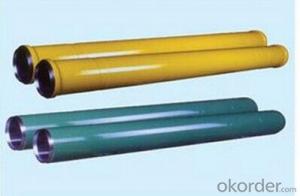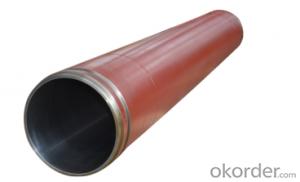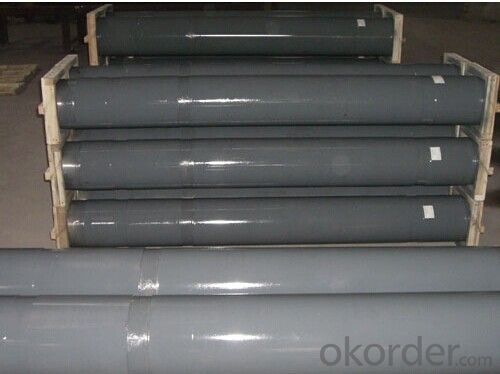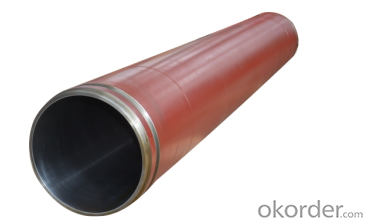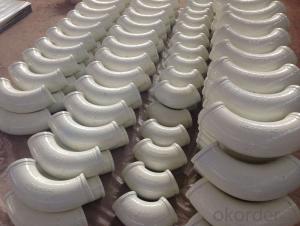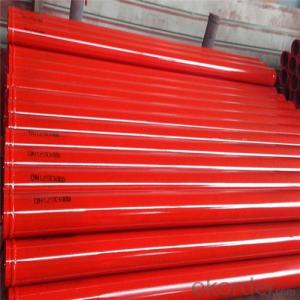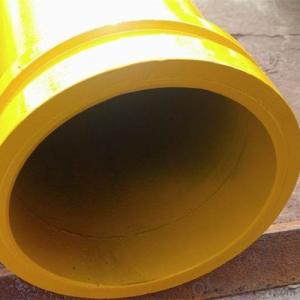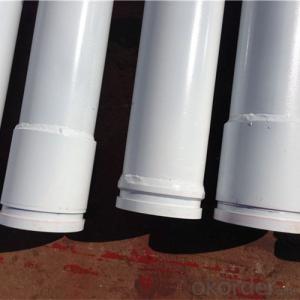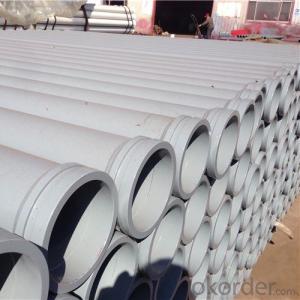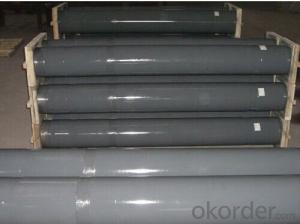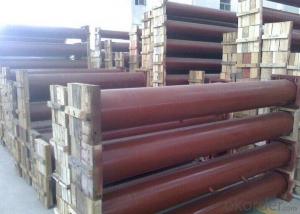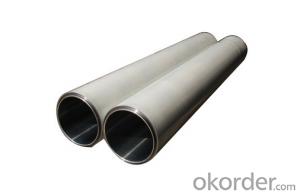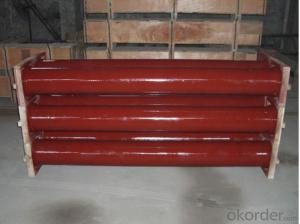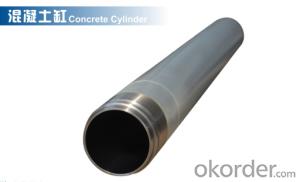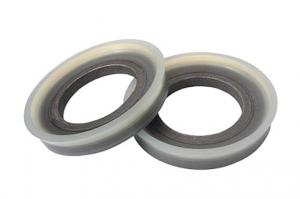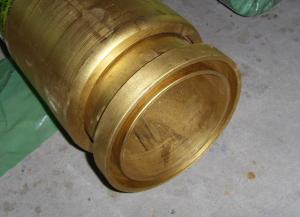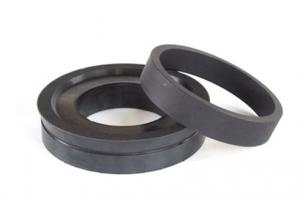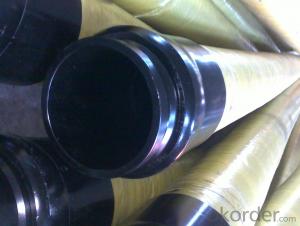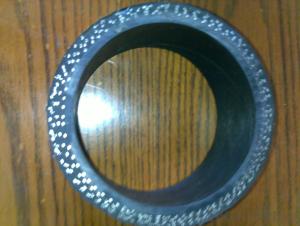PUMPING CYLINDER(PM) I.D.:DN230 CR. THICKNESS :0.25MM-0.3MM LENGTH:2300MM
- Loading Port:
- Shanghai
- Payment Terms:
- TT OR LC
- Min Order Qty:
- 2 pc
- Supply Capability:
- 1000 pc/month
OKorder Service Pledge
OKorder Financial Service
You Might Also Like
Specification Data:
Concrete Pump Delivery Cylinder DN230*2300
1. Capacity: 60,000~80,000cbm
2. Size: DN180, DN200, DN230..
4. Brand: PM, Sany,ZM
Concrete Pump Delivery Cylinder DN230*2300
1. Material: C45
2. quenching and tempering to improve the hardness to HB241-280
3. inner wall chrome thickness is 0.25-0.30mm, hardness HV820-900.
4. Brand: SCHWING, PM, SANY, KYOKUTO, CIFA
5. Capacity: 60,000~80,000cbm
Concrete Cylinder | ||
Material | High Manganese Steel | |
Special | Coating hardness layer in the internalwall | |
Application | In concrete pump trucks | |
For Brand | Sany,Putzmeister,Schwing,,Zoomlion,CIFA etc | |
Details information | ||
Brand | Model | |
219 - DN180*1775-1600 | ||
Schwing | BP3000 | 219 - DN200*1775-1600 |
254 - DN230*2125-1800 | ||
DN230*2300mm | ||
DN230*2100mm | ||
Putzmeister | DN230*1600mm | |
DN200*1600mm | ||
DN180*2000mm | ||
40C1410 | 206-DN180*1530-1400 | |
50C1410 | 210- DN180*1545-1400 | |
60A1406 | 219- DN195*1570-1400 | |
Sany | 60C1416 | 226- DN195*1570-1400 |
60C1816 | 232- DN200*1946-1800 | |
C120/37A | 232- DN200*2162-2000 | |
C120/48 | 262- DN230*2146-2000 | |
62EA | 203-DN 180*1605-1400 | |
62G | 219-DN200*1187-1000 | |
62D | 219-DN200*1587-1400 | |
Zoomlion | 62H | 219-DN200*1787-1600 |
62CA | 219-DN200*1862-1600 | |
62M | 219-DN200*2022-1800 | |
0019931A | 219-DN200*2022-1800 | |
62L | 245-DN205*2284-2000 | |
FAQ:
Q1: How long about delivery time about DN230*2300 ?
A1: Normally we keep the raw materials for old customers and sometime we also keep stock products to make sure delivery time in any emergency cases.
Q2: How do we guarantee the quality of our Concrete Pump Delivery Cylinder DN230*2300 ?
A2: We have established an advanced quality management system which conducts strict quality tests at every step, from raw materials to the final product. At the same time, we provide extensive follow-up service assurances as required.
Q3: How soon can we receive the product after purchase?
A3: Within three days of placing an order, we will book the vessel for goods. The specific shipping date is dependent upon international and government factors, but is typically 7 to 30 workdays.
Q4: If we can produce some Concrete Pump Delivery Cylinder DN230*2300 according to customers request?
A4: Yes, we can produce Concrete Placing Boom according to the difference country situations to make it suitable to the market and customers. We have very professional technical team to make the design.
Q5: How to make a quick resolution for after service?
A5: OKorder and our manufacture both have overseas branches all-around of world, IF needed,
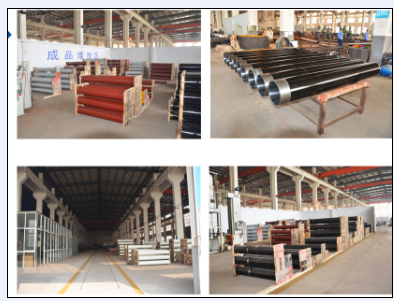
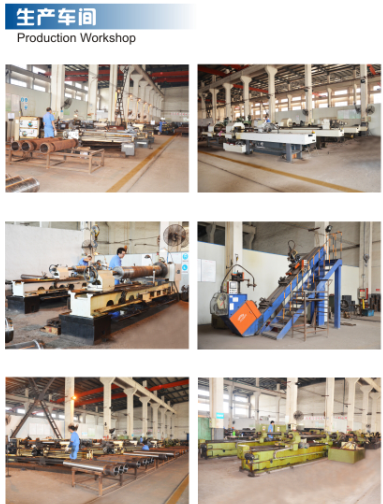
- Q: How can one ensure compatibility between concrete pump spare parts and the pump?
- To maintain the efficiency and performance of the equipment, it is crucial to ensure compatibility between concrete pump spare parts and the pump. Here are several steps to guarantee compatibility: 1. Start by identifying the correct model and manufacturer. Gather all necessary information about the concrete pump, such as the model number and manufacturer. This information will assist in finding spare parts specifically designed for that particular pump model. 2. Always opt for genuine spare parts. It is highly recommended to use authentic spare parts provided by the pump manufacturer or authorized distributors. Genuine parts are designed and tested to meet the pump's specifications, ensuring a perfect fit and compatibility. 3. Verify part numbers and specifications before making any purchases. Carefully compare the part numbers and specifications with the original parts to ensure compatibility with the pump. 4. Seek guidance from experts or the manufacturer's technical support team if unsure about the compatibility of certain spare parts. Their expertise and experience can provide valuable guidance and advice. 5. Regularly inspect and maintain the concrete pump to identify any wear or damage to the parts. This will enable the identification of specific spare parts that require replacement and ensure compatibility with the pump. 6. Prioritize quality and reliability when selecting spare parts, even if cost is a factor. Investing in high-quality parts guarantees better performance, durability, and compatibility with the pump. By following these steps, one can maximize the lifespan, performance, and overall efficiency of the concrete pump by ensuring compatibility between the spare parts and the pump.
- Q: How can a faulty gearbox affect the pump's performance?
- A faulty gearbox can negatively affect the pump's performance by causing issues such as uneven rotation, decreased efficiency, increased noise, and possible breakdowns.
- Q: How often should a concrete pump spectacle plate be replaced?
- The frequency of replacing a concrete pump spectacle plate depends on various factors such as usage intensity, maintenance practices, and the condition of the plate. However, as a general guideline, it is recommended to inspect and potentially replace the spectacle plate every 500 to 1000 hours of operation or sooner if signs of wear or damage are observed. Regular inspections and timely replacements help ensure optimal performance and prevent any potential safety risks.
- Q: How long does it take to receive concrete pump spare parts after placing an order?
- The delivery time for concrete pump spare parts can differ depending on various factors. Firstly, it relies on the availability of the specific spare parts you have ordered. If the parts are readily in stock, the delivery time can be relatively fast. However, if the parts need to be manufactured or sourced because they are not in stock, it may take longer to receive them. Secondly, the distance between the supplier and your location also plays a role in the delivery time. If the supplier is nearby, the parts can be delivered within a few days. However, if the supplier is far away or in a different country, it may take longer due to shipping and customs procedures. Moreover, the delivery time can also be influenced by the shipping method you choose. Expedited shipping options can ensure quicker delivery but at an additional cost. On the other hand, standard shipping methods may take longer but are usually more cost-effective. Lastly, the efficiency and responsiveness of the supplier also factor into the equation. A reliable supplier with a streamlined ordering and shipping process will likely be able to deliver the spare parts more quickly. To sum up, the time it takes to receive concrete pump spare parts after placing an order can vary based on factors such as availability, distance, shipping method, and supplier efficiency. It is advisable to inquire about estimated delivery times when placing the order to gain a better understanding of when the parts will be delivered.
- Q: How often should concrete pump water pumps be inspected and replaced?
- The inspection and replacement frequency for concrete pump water pumps relies on multiple factors, including workload, operating conditions, and maintenance practices. It is generally advisable to inspect the water pump once a month to ensure proper functioning. During the inspection, it is crucial to check for leaks, unusual noises, and signs of wear and tear. If any issues are detected, immediate action should be taken, such as repairing or replacing damaged parts. Regarding replacement, it is challenging to provide an exact timeframe as it varies based on the pump's quality, intensity of use, and maintenance level. However, a general recommendation is to consider replacing the water pump every 1-2 years for heavy usage or every 3-5 years for moderate usage. Regular maintenance, including cleaning and lubricating the pump, can extend its lifespan and reduce the need for frequent replacements. It's important to note that these suggestions are general guidelines and may differ based on the manufacturer's instructions, industry standards, and local regulations. It is advisable to consult the manufacturer's guidelines and seek professional advice from experts in the field to determine the appropriate inspection and replacement schedule for concrete pump water pumps in your specific circumstances.
- Q: How does the concrete pump work?
- The construction of automobile chassis, internal combustion engine, air compressor, water pump, hydraulic device, etc., which constitute the concrete pump truck, shall be operated in accordance with the safety instructions of the horizontal transport machinery, power plant and hydraulic machinery respectively
- Q: Can I get spare parts for concrete pump wear plates and cutting rings?
- Yes, you can definitely get spare parts for concrete pump wear plates and cutting rings. These parts are essential for the smooth operation and performance of a concrete pump. Many manufacturers and suppliers specialize in providing spare parts for concrete pumps, including wear plates and cutting rings. You can contact these suppliers or manufacturers directly to inquire about the availability and pricing of these spare parts. Additionally, there are also online platforms and marketplaces where you can find a wide range of spare parts for various concrete pump models. It is always recommended to ensure that you purchase genuine and high-quality spare parts to guarantee the longevity and efficiency of your concrete pump.
- Q: How can a faulty concrete pump control valve affect the pumping operation?
- A faulty concrete pump control valve can have several negative effects on the pumping operation. Firstly, it can cause a loss of control over the concrete flow rate. The control valve is responsible for regulating the amount of concrete being pumped, and if it is faulty, it may not be able to properly adjust the flow rate. This can lead to either too much or too little concrete being pumped, which can result in an inefficient operation. Secondly, a faulty control valve can cause inconsistent concrete flow. The valve is designed to maintain a steady and consistent flow of concrete, but if it is not functioning properly, it may result in fluctuations in the flow. This can lead to uneven distribution of the concrete, which can affect the quality and integrity of the pumped concrete. Furthermore, a faulty control valve can also contribute to increased wear and tear on the pump and other components. When the valve is not operating correctly, it can cause excessive pressure or strain on the pump, leading to increased wear on the equipment. This can result in more frequent breakdowns or the need for repairs, which can be costly and time-consuming. Overall, a faulty concrete pump control valve can significantly impact the pumping operation by causing a loss of control over the flow rate, inconsistent concrete flow, and increased wear and tear on the equipment. It is important to regularly inspect and maintain the control valve to ensure its proper functioning and avoid these negative consequences.
- Q: What is the role of a concrete pump hopper vibrator?
- The role of a concrete pump hopper vibrator is to ensure the smooth and efficient flow of concrete from the hopper into the pump. It helps to prevent clogging and blockages by vibrating the hopper, which loosens the concrete and allows it to flow freely into the pump.
- Q: Can concrete pump spare parts be imported from other countries?
- Yes, concrete pump spare parts can be imported from other countries. Many manufacturers and suppliers of concrete pump spare parts have a global presence and offer international shipping options. Importing concrete pump spare parts from other countries can provide access to a wider range of products, competitive pricing, and high-quality components. However, it is important to consider factors such as import regulations, customs duties, and shipping costs when importing concrete pump spare parts from other countries.
Send your message to us
PUMPING CYLINDER(PM) I.D.:DN230 CR. THICKNESS :0.25MM-0.3MM LENGTH:2300MM
- Loading Port:
- Shanghai
- Payment Terms:
- TT OR LC
- Min Order Qty:
- 2 pc
- Supply Capability:
- 1000 pc/month
OKorder Service Pledge
OKorder Financial Service
Similar products
Hot products
Hot Searches
Related keywords
